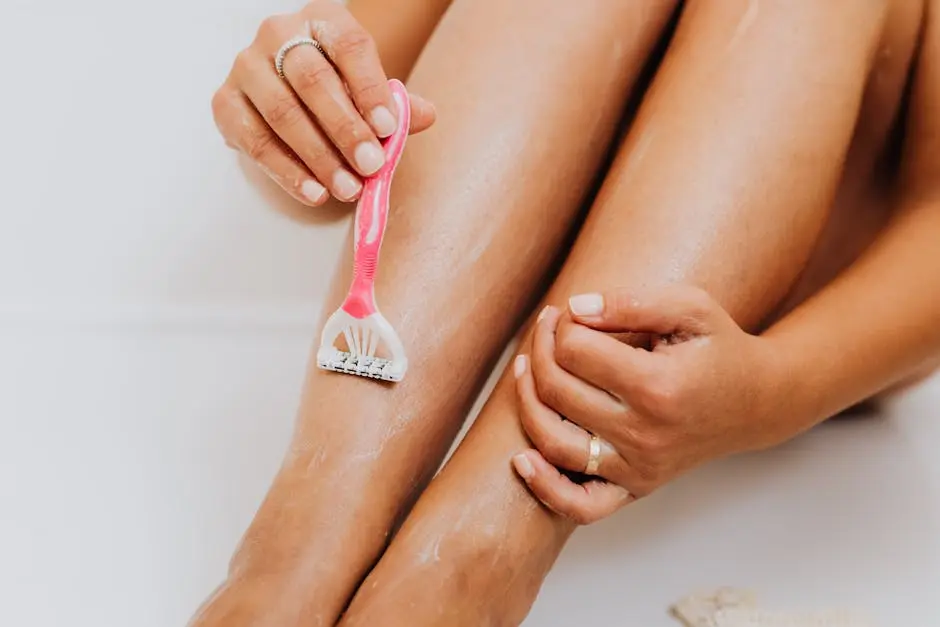Navigating the world of hair removal can be quite daunting with so much information out there. Myths abound that can lead to confusion and misinformation. In this blog, we’ll tackle some of the most common misconceptions surrounding hair removal, providing you with the facts you need to make informed decisions about your personal grooming.
Myth 1: Shaving Makes Hair Grow Back Thicker
One of the most prevalent myths is that shaving causes hair to grow back thicker, darker, or coarser. In reality, shaving simply cuts hair at the surface, and any perceived change in texture is just an optical illusion. The hair itself doesn’t change with the method of hair removal; rather, it’s the blunt edge created by shaving that may feel stubbly when it grows back. Therefore, rest assured, shaving does not alter the characteristics of your hair.
Consider this: think about the differences between hair types. Hair that is fine, medium, or coarse has its own natural growth pattern, driven by genetics and hormonal influence. When you shave, you’re not changing the growth cycle or thickness of the hair; you’re just managing its length. This myth can lead to unnecessary anxiety about hair removal, but once you understand the truth, it can help you feel more confident about your grooming choices.
So, the next time someone claims that shaving thickens your hair, you can confidently enlighten them with the facts. Embrace your grooming routine without fear of hair growing back thicker, and explore what method best suits your needs.
Myth 2: Hair Removal Creams Are Always Safe for All Skin Types
While hair removal creams can be effective, they contain chemicals that may not be suitable for every skin type. It’s essential to conduct a patch test and choose products formulated for your specific skin sensitivity. Not all hair removal creams are created equal; some may include harsh ingredients that could irritate sensitive skin or lead to allergic reactions.
Moreover, different areas of your body may react differently. For instance, the skin on your face is generally more delicate than that on your legs, thus requiring a gentler formulation. Always read labels carefully and, when in doubt, consult with a dermatologist or skin expert before trying new products.
Additionally, safety goes beyond just skin reactions. Overuse of hair removal creams can damage the skin barrier, leading to long-term complications. Therefore, while these creams can be a quick solution, it is crucial to use them responsibly and be aware of how your skin reacts to various formulations.
Myth 3: Waxing Permanently Removes Hair
Many people believe that waxing provides long-lasting results, but it actually removes hair only from the follicle, meaning hair will eventually regrow. However, repeated waxing may lead to finer hair over time. This reduction happens because consistent removal can affect the hair’s growth cycle. It creates a cycle that can make future waxing sessions a bit easier, but it’s important to note that you won’t achieve permanent removal through waxing alone.
Understanding the waxing process also sheds light on why many swear by it. Unlike shaving, which offers a quick fix, waxing takes a bit more patience and can create smoother skin because it pulls hair from the roots. While some might see this as a downside, the smoother feel can last a couple of weeks longer than shaving results and may lead to softer hair regrowth.
It’s essential to consider your own hair growth rate and to plan your waxing appointments accordingly. Most individuals will find waxing to be an appealing choice for its long-lasting results, but remember, it’s not the end-all-be-all when it comes to hair removal. Combining waxing with other methods can lead to even more effective results.
Myth 4: All Laser Hair Removal Is Permanent
Laser hair removal can significantly reduce hair growth, but it’s not guaranteed to be permanent for everyone. Multiple sessions are often needed, and results can vary based on hair type and skin color. This myth may stem from the impressive results many experience after undergoing treatments, but the reality is that individual outcomes can differ vastly.
Each hair follicle responds differently to laser energy, depending on various factors, including melanin content and hair texture. Thus, while some might enjoy a hair-free existence post-treatment, others may find they need maintenance sessions every few months to keep their skin smooth. Nonetheless, many find the investment in laser hair removal worth it, given the convenience it offers in the long term.
Therefore, if you’re considering laser hair removal, approach it with realistic expectations and be prepared for the possibility of ongoing treatments. Consult with a licensed professional to determine what works best for you, ensuring that you’re fully informed about the process and its potential outcomes.
Myth 5: You Should Always Exfoliate Before Hair Removal
Exfoliation can help with ingrown hairs but isn’t always necessary before hair removal. In some cases, particularly with waxing or shaving, exfoliating right before can irritate the skin. Know your skin and what works best for you. The right approach to exfoliation is crucial, as not preparing your skin properly can lead to discomfort and unwanted results.
If you struggle with ingrown hairs, regular exfoliation is a great way to keep your skin smooth and free from blockages. It’s an effective way to buff away dead skin and allow your hair to grow freely. However, giving your skin ample time to recover is also important. For instance, consider exfoliating a day or two before shaving or waxing rather than immediately before the process.
Ultimately, finding your rhythm with hair removal will take some experimentation. Whether that means incorporating exfoliation into your routine or finding a balance that suits your skin type, the key takeaway is to listen to your body. It knows best!
Myth 6: Hair Grows Back Faster in the Summer
While hair growth can be influenced by seasonal factors like temperature and sunlight, the idea that hair grows back faster in the summer is more myth than fact. Genetics and personal biology play a more significant role in hair growth rates. Many people perceive their hair to grow quickly in the warmer months due to increased exposure to sun and heat, but this is not backed by any substantial scientific evidence.
It’s easy to observe your hair growing back sooner after a fresh shave or wax in summer because you’re probably more aware of your grooming routine during swimsuit season. However, the underlying pace of hair growth remains consistent, regardless of the season. Trust that your body’s hair cycle is steady and predictable, even if it feels different.
To clarify, hair growth cycles can vary from person to person, but the idea that there’s a seasonal influence is largely anecdotal. If you’re noticing rate changes, it’s likely related to personal biology rather than summer sun. So next summer, as you’re betting on the speed of your hair growth, remember that your unique genetics are what truly shape the future of your hair.
Empowering Your Hair Removal Choices
Understanding the truth behind hair removal can empower you to choose the best methods for your needs. By debunking these common myths, we hope to bring clarity to your grooming routine and help you feel more confident in your choices.

